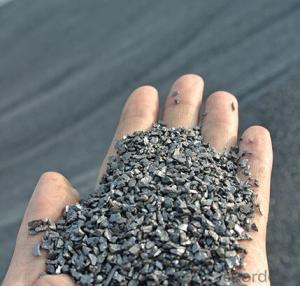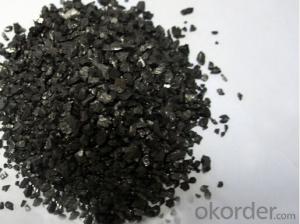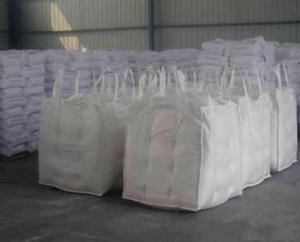Recarburizer 3-5MM 93% FC Carburant Carbon Additives for steel plant
- Loading Port:
- Qingdao
- Payment Terms:
- TT OR LC
- Min Order Qty:
- 10 m.t.
- Supply Capability:
- 50000 m.t./month
OKorder Service Pledge
OKorder Financial Service
You Might Also Like
Specifications Of Recarburizer 93% FC
- High C content;
- Low S and N content;
- High abosorbility;
Recarburizer(Carburant, carbon additives) with high quality, 0-20mm for metal casting foundry and steel plant, low nitrogen content and high carbon content, min 90% carbon content, at the same time as your requirements with no problem. The best media for adding carbon.
Technical Data Sheet of Recarburizer 93% FC
Fixed carbon | ≥ 93% |
Ash content | ≤ 5.0% |
Vol . Matter | ≤ 1.0% |
Sulphur content | ≤ 0.3% |
Moisture content | ≤ 0.3% |
Size | 0-20mm or as your requirement. |
Packing | - 25kg bag - One tone bags, Jumbo bag |
Delivery time | In 5-10 working days or depends on the order quantity |
Supply ability | 50000 Metric Ton Per Month |
Payment terms | L/C at sight or T/T |
Available Size: 0,1-4mm, 1-5mm, 3-8mm, 8-20mm (as per customers’ requirements)
Usage: widely used in casting foundry, steel-making, metallurgical Etc.
Applications of Recarburizer 93% FC
Mainly used in steel making in electrical stove, screening water, ship building sandblast to remove rust,producing carbon materials Etc.
Characteristics of Recarburizer 93% FC
- Particle size, porosity, absorption speed stable
- High degree of carbonize product, increase the original nuclear capability in the shape of liquid iron.
- Increased in the inoclation of nodular cast iron ball ink quantiyt, increase in th electric furnace iron graphit crystal nucleus.
- Excellent performance, stable.
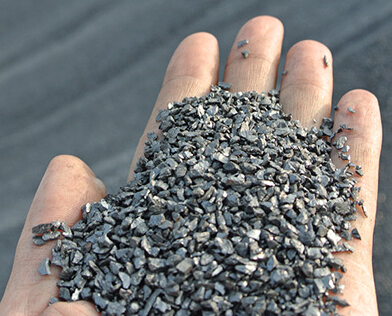

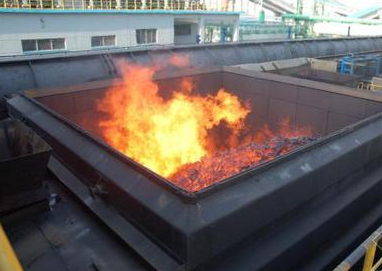

- Q:How can individuals reduce their carbon footprint?
- Achieving a more sustainable future and reducing our carbon footprint can be accomplished through various actions. Consider the following effective methods: 1. Energy consumption reduction: The conservation of energy plays a vital role in decreasing carbon emissions. Make the switch to energy-efficient appliances, turn off lights when not in use, unplug electronics when not in use, and take advantage of natural lighting whenever possible. Additionally, adjusting thermostats to energy-saving temperatures and utilizing programmable thermostats can significantly decrease energy consumption. 2. Utilize renewable energy sources: A transition to renewable energy sources, such as solar or wind power, can drastically reduce carbon emissions. Install solar panels on rooftops, or explore the option of purchasing green energy from utility companies that provide renewable alternatives. 3. Decrease water usage: Indirectly, conserving water aids in reducing energy consumption and carbon emissions. Repair leaky faucets, shorten shower durations, install water-saving fixtures, and gather rainwater for outdoor activities. Additionally, consider implementing drought-resistant landscaping to minimize water usage for gardening purposes. 4. Consume mindfully: When making purchases, opt for sustainable choices. Select durable and long-lasting items, repair and reuse rather than replacing, and prioritize products made from recycled or sustainable materials. Furthermore, support local and sustainable businesses that prioritize eco-friendly practices. 5. Minimize transportation emissions: Reduce reliance on private vehicles by utilizing public transportation, carpooling, biking, or walking whenever feasible. If owning a car is necessary, choose electric or hybrid vehicles. Regular maintenance, proper tire inflation, and avoiding unnecessary idling all contribute to decreasing transportation emissions. 6. Embrace a plant-based diet: The food industry has a considerable carbon footprint, particularly due to livestock production. By reducing meat consumption or adopting a plant-based diet, carbon emissions can be significantly reduced while also offering health benefits. If a complete plant-based diet is not feasible, try incorporating more vegetarian or vegan meals into your eating habits. 7. Decrease waste generation: Waste contributes to greenhouse gas emissions, making waste reduction crucial. Opt for products with minimal packaging, diligently recycle, compost organic waste, and avoid single-use plastics. Plan meals, only purchase what is needed, and properly store leftovers to minimize food waste. 8. Support environmental initiatives and organizations: Engage with local and global organizations dedicated to environmental conservation. Take part in community clean-ups, support reforestation efforts, and advocate for sustainable practices in your workplace and community. By implementing these strategies into our daily lives, individuals can make a significant impact in reducing their carbon footprint and combating climate change. It is important to remember that every small action matters, and collectively, we can create a sustainable future for future generations.
- Q:How does carbon affect the formation of blizzards?
- Blizzards, characterized by strong winds, low temperatures, and heavy snowfall, are not directly affected by carbon. Blizzards typically occur when a low-pressure system moves into an area with enough moisture and cold air. Temperature, moisture, and wind patterns are the main factors that influence the formation of blizzards. Nevertheless, carbon emissions and their impact on the climate can indirectly affect the frequency and intensity of blizzards. Carbon dioxide (CO2) and other greenhouse gases trap heat in the atmosphere, causing global warming. This warming effect can change weather patterns, including the conditions required for blizzard formation. Carbon emissions can lead to warmer temperatures, altering precipitation patterns and increasing moisture in the atmosphere. This additional moisture, along with the necessary cold air, can contribute to heavier snowfall during blizzards. Furthermore, climate change can influence wind patterns, impacting the intensity and duration of blizzards. Changes in atmospheric circulation patterns can modify the tracks and strength of storms, potentially resulting in more or fewer blizzard events in specific regions. It is worth noting that the specific impact of carbon emissions on blizzard formation varies depending on regional and local factors. The intricate nature of weather systems and the interaction between different variables make it difficult to attribute any single weather event solely to carbon emissions. However, the overall influence of carbon emissions on the climate system increases the potential for more extreme weather events, including blizzards.
- Q:What is carbon emission and what harm does it do? How can carbon dioxide be prevented?
- They also believe that the mechanism of independent coking causes and synthesis gas generation, through the use of appropriate catalyst can avoid from kinetics of coke.It is found that the effect of catalyst by coke gas ratio of material. In 750 degrees, when n (CH4): n (O2) = 2, the catalyst produces a large amount of coke; when n (CH4): n (O2) = 1.75, the catalyst activity is low, but no coke formation; when n (CH4) n (O2) =1.78, the coke on the catalyst surface to achieve single steady-state distribution, almost no decrease of catalyst activity; continuously for 50 hours at 800 DEG C, and the catalyst is very stable.Prevention: 1., the temperature should not be too high, 2. water carbon ratio to a reasonable 3, to ensure the quality of the catalyst
- Q:What is carbon nanocomposite?
- Carbon nanocomposite refers to a type of material that combines carbon nanotubes or graphene with a matrix material, such as polymers or metals, to form a composite material. The carbon nanotubes or graphene are typically added in small amounts, often in the form of nanoparticles, to enhance the mechanical, electrical, and thermal properties of the composite material. Carbon nanotubes are cylindrical structures made up of carbon atoms arranged in a hexagonal lattice, while graphene is a single layer of carbon atoms arranged in a two-dimensional lattice. These carbon-based materials possess exceptional properties, such as high strength, electrical conductivity, and thermal conductivity. When incorporated into a composite material, these properties can be transferred to the overall structure, resulting in improved performance. The use of carbon nanocomposites has been explored in various industries and applications. In aerospace, for example, these materials have been investigated for their lightweight and high-strength properties, which could potentially enhance the fuel efficiency and durability of aircraft components. In electronics, carbon nanocomposites have shown promise for developing high-performance sensors, conductive films, and energy storage devices. Additionally, they have been studied for their potential applications in medical devices, automotive parts, and energy storage systems. Overall, carbon nanocomposites offer the opportunity to create materials with enhanced properties by leveraging the unique characteristics of carbon nanotubes or graphene. However, the production and scalability of these materials still pose challenges, and further research is needed to optimize their performance and cost-effectiveness for various applications.
- Q:What is the structure of graphite, another form of carbon?
- Graphite possesses a unique carbon form with a structure that differs from diamond or amorphous carbon. It showcases layers of carbon atoms arranged in a hexagonal lattice. Covalent bonds connect each carbon atom to three neighboring carbon atoms, resulting in a two-dimensional sheet-like structure. Within each layer, the carbon atoms bond together through robust covalent bonds, creating a flat network. The carbon-carbon bonds in graphite are notably stronger than typical single bonds, ensuring the structure's high stability. The hexagonal lattice arrangement of carbon atoms forms a honeycomb-like pattern, giving graphite its characteristic appearance. The layers in graphite remain cohesive due to weak van der Waals forces, enabling easy sliding between them. This attribute grants graphite its lubricating properties and allows it to leave marks on paper when used as a pencil lead. Additionally, the arrangement of carbon atoms in graphite contributes to its exceptional electrical conductivity. The structure's delocalized electrons can move freely along the layers, facilitating the flow of electric current. This feature renders graphite valuable in various applications, including electrical components, electrodes, and as a lubricant in high-temperature environments. In conclusion, graphite's structure comprises layers of carbon atoms organized in a hexagonal lattice. These layers are bonded through strong covalent bonds within each layer and held together by weak van der Waals forces. This distinctive structure grants graphite its unique properties, such as its lubricating nature, electrical conductivity, and versatility in diverse industrial applications.
- Q:Joint carbide gas incident
- After a lapse of 25 years, a India District Court on 1984 Bhopal gas leak to be long in coming judgment, Union Carbide (India) Co., Ltd. 7 India nationals day was held for negligence causing death, they will face up to two years in prison. On the same day, hundreds of survivors, family members and environmentalists gathered around the courthouse to protest the court's decision that the perpetrators of the worst industrial disaster in twentieth Century were too light and too late. In 1969, Union Carbine Co established a Union Carbide in central India state of Bhopal Beijiao city (India) Co. Ltd., specializing in the production of aldicarb, carbaryl pesticide drops. The chemicals used in these products is called a methyl isocyanate poisonous gas. The early morning of December 3, 1984, this factory storage explosive liquid methyl isocyanate the steel tank, 45 tons of poison gas leak quickly, directly killed more than 1.5 people, allegedly have caused more than 550 thousand people died and chemical poisoning related lung cancer, renal failure and liver disease.
- Q:What is the role of carbon in photosynthesis?
- The essential role of carbon in photosynthesis cannot be overstated. Carbon dioxide, a primary reactant in the photosynthesis process, combines with water and sunlight energy to produce glucose, which serves as the main source of energy for plant growth and development. To enter the leaf, carbon dioxide utilizes tiny pores known as stomata, diffusing into the chloroplasts where photosynthesis occurs. Within the chloroplasts, carbon dioxide interacts with water, sunlight, and chlorophyll, resulting in a series of chemical reactions called the Calvin cycle or dark reactions. During this cycle, glucose is synthesized and stored as a vital energy source for plants. The carbon atoms in carbon dioxide act as the foundation for glucose and other organic compounds produced during photosynthesis. Through a complex sequence of enzymatic reactions, carbon dioxide is transformed into carbohydrates, lipids, proteins, and nucleic acids, all of which are necessary for plant growth and survival. Moreover, photosynthesis plays a significant role in the global carbon cycle, not only producing glucose but also regulating the levels of carbon dioxide in the atmosphere and releasing oxygen as a byproduct. This process helps mitigate climate change and maintains the necessary balance of oxygen for all living organisms. In essence, carbon's role in photosynthesis is pivotal, serving as the raw material for glucose synthesis and other organic compounds. Through this process, plants convert carbon dioxide into energy-rich molecules, contributing to their survival, growth, and the overall equilibrium of carbon in the Earth's atmosphere.
- Q:What are carbon isotopes and how are they used in scientific research?
- Carbon isotopes are different forms of carbon that vary in the number of neutrons in their nucleus. The most common carbon isotope is carbon-12, which has 6 protons and 6 neutrons. However, there are also carbon-13 and carbon-14 isotopes, which have 7 and 8 neutrons respectively. In the realm of scientific research, carbon isotopes are utilized for their distinctive characteristics in a variety of ways. One significant application is their use in radiocarbon dating. Carbon-14, a radioactive isotope, undergoes decay over time, allowing scientists to determine the age of organic materials up to 50,000 years old. By measuring the ratio of carbon-14 to carbon-12 in a sample, scientists can estimate the time since the organism's death. Moreover, carbon isotopes are employed in the study of carbon cycling in ecosystems. Since plants preferentially absorb carbon-12 over carbon-13, the isotopic composition of carbon in plants can provide information about their growth and carbon source. By analyzing isotopic signatures in plant tissues, scientists can gain insights into ecological processes like photosynthesis, respiration, and carbon dioxide exchange between different parts of the ecosystem. Carbon isotopes also play a role in examining animal diets. The carbon isotopic composition in an animal's tissues reflects the carbon sources it consumes. By analyzing the carbon-13 to carbon-12 ratio, scientists can determine whether an animal primarily consumes plants or other animals, offering insights into food webs, trophic levels, and ecological interactions. Furthermore, carbon isotopes are valuable in fields like paleoclimatology, where the carbon-13 to carbon-12 ratio in ancient ice cores or ocean sediments can provide information about past climate conditions. Isotopic analysis of carbon compounds is also used in forensic science, geochemistry, and environmental monitoring to trace the origin and fate of pollutants and contaminants. In conclusion, carbon isotopes are different forms of carbon atoms with varying numbers of neutrons. They are extensively utilized in scientific research for radiocarbon dating, studying carbon cycling in ecosystems, determining animal diets, understanding past climate conditions, and other fields. Their unique properties make them indispensable tools for comprehending the natural world and our place within it.
- Q:What are the consequences of increased carbon emissions on economic stability?
- Increased carbon emissions have significant consequences on economic stability. Firstly, the costs associated with climate change impacts such as extreme weather events, rising sea levels, and damage to infrastructure can burden economies, leading to increased expenditures for adaptation and recovery. Additionally, carbon-intensive industries may face regulatory measures and higher costs, impacting their competitiveness and potentially leading to job losses. The need for transitioning to cleaner energy sources and implementing carbon pricing mechanisms can also entail upfront investments and adjustment costs for businesses. Finally, the potential disruption of global supply chains due to climate-related events can disrupt trade and negatively impact economic stability. Overall, increased carbon emissions pose risks to economic stability by exacerbating climate change impacts and necessitating costly adjustments.
- Q:What does "2T-250,1U-200@300" and "1Y-100" mean in carbon fiber cloth reinforcement?
- the indicates that the U type hoop is 200 wide and the spacing is 300; the 1Y-100 represents the width of the 100 width and each of the two sides of the beam. The units are mm.
1. Manufacturer Overview |
|
|---|---|
| Location | |
| Year Established | |
| Annual Output Value | |
| Main Markets | |
| Company Certifications | |
2. Manufacturer Certificates |
|
|---|---|
| a) Certification Name | |
| Range | |
| Reference | |
| Validity Period | |
3. Manufacturer Capability |
|
|---|---|
| a)Trade Capacity | |
| Nearest Port | |
| Export Percentage | |
| No.of Employees in Trade Department | |
| Language Spoken: | |
| b)Factory Information | |
| Factory Size: | |
| No. of Production Lines | |
| Contract Manufacturing | |
| Product Price Range | |
Send your message to us
Recarburizer 3-5MM 93% FC Carburant Carbon Additives for steel plant
- Loading Port:
- Qingdao
- Payment Terms:
- TT OR LC
- Min Order Qty:
- 10 m.t.
- Supply Capability:
- 50000 m.t./month
OKorder Service Pledge
OKorder Financial Service
Similar products
New products
Hot products


